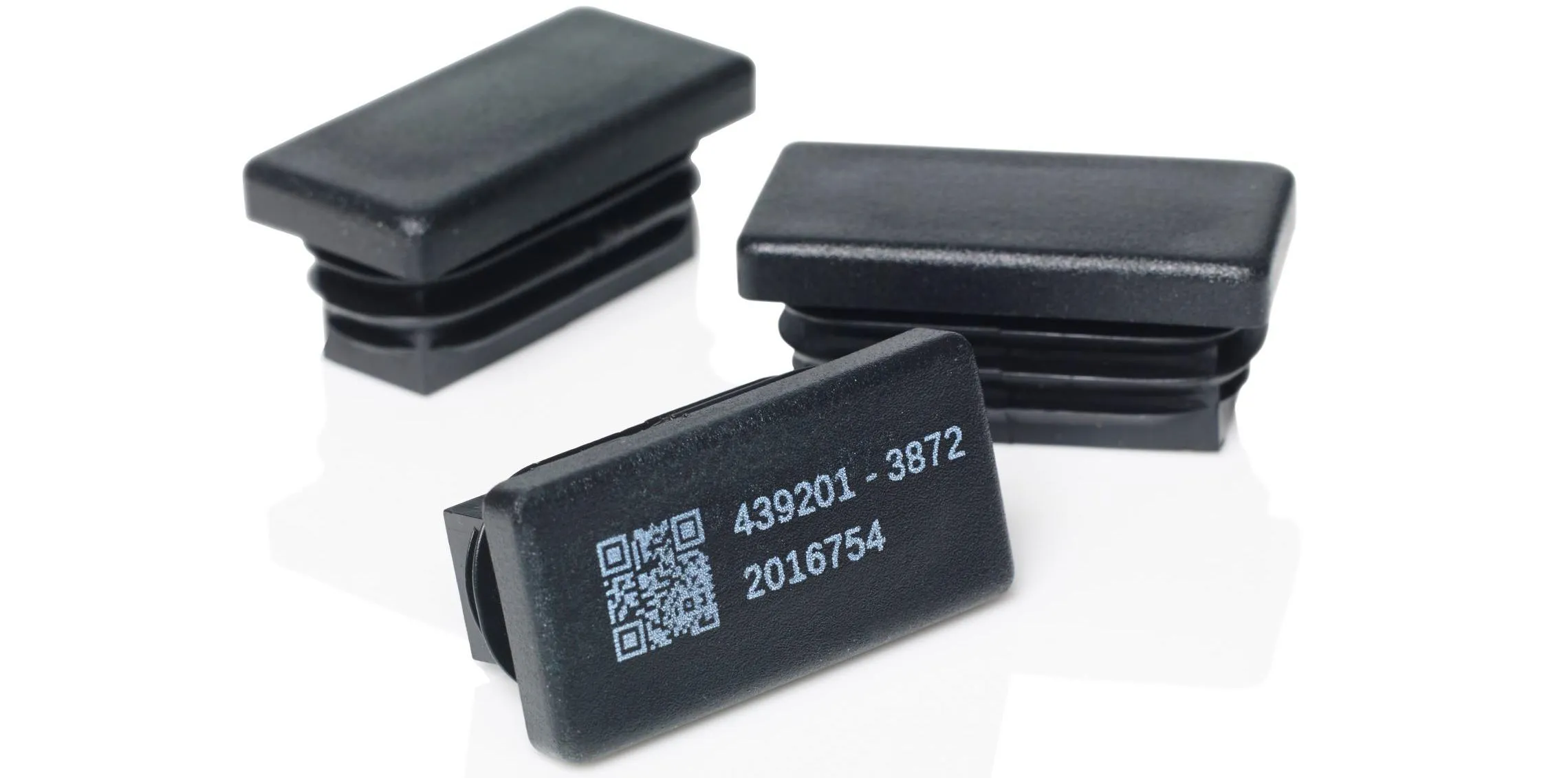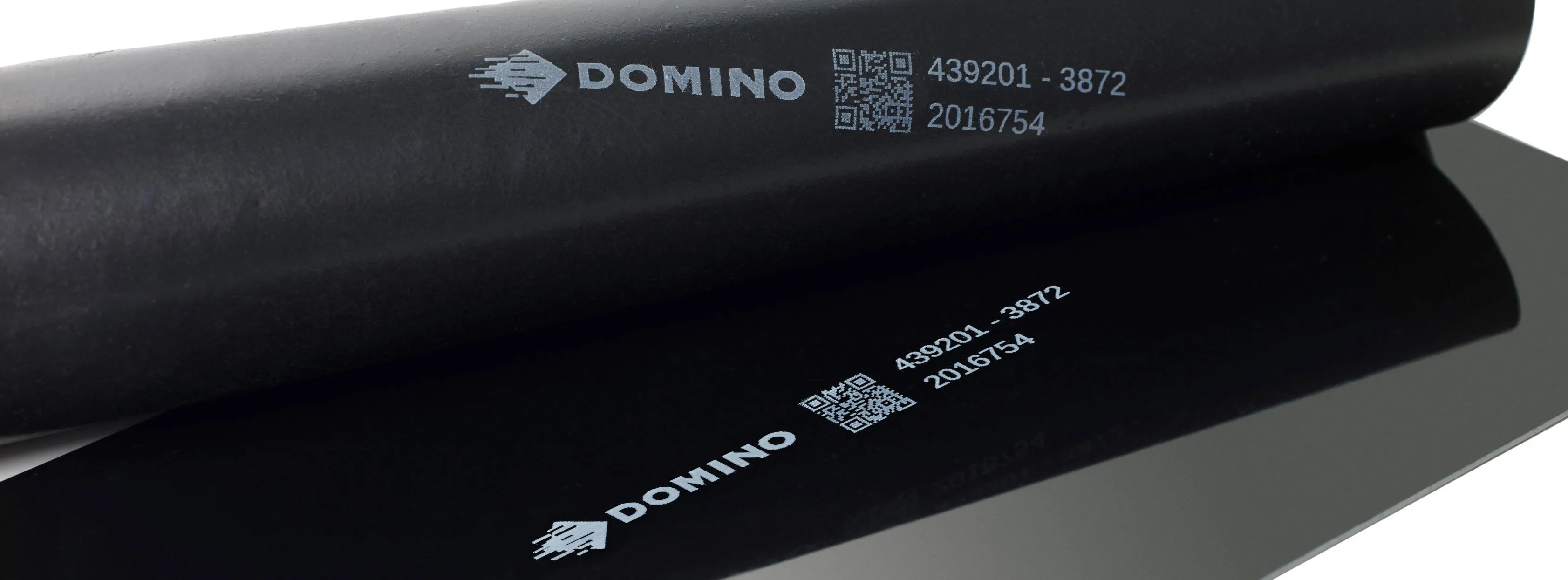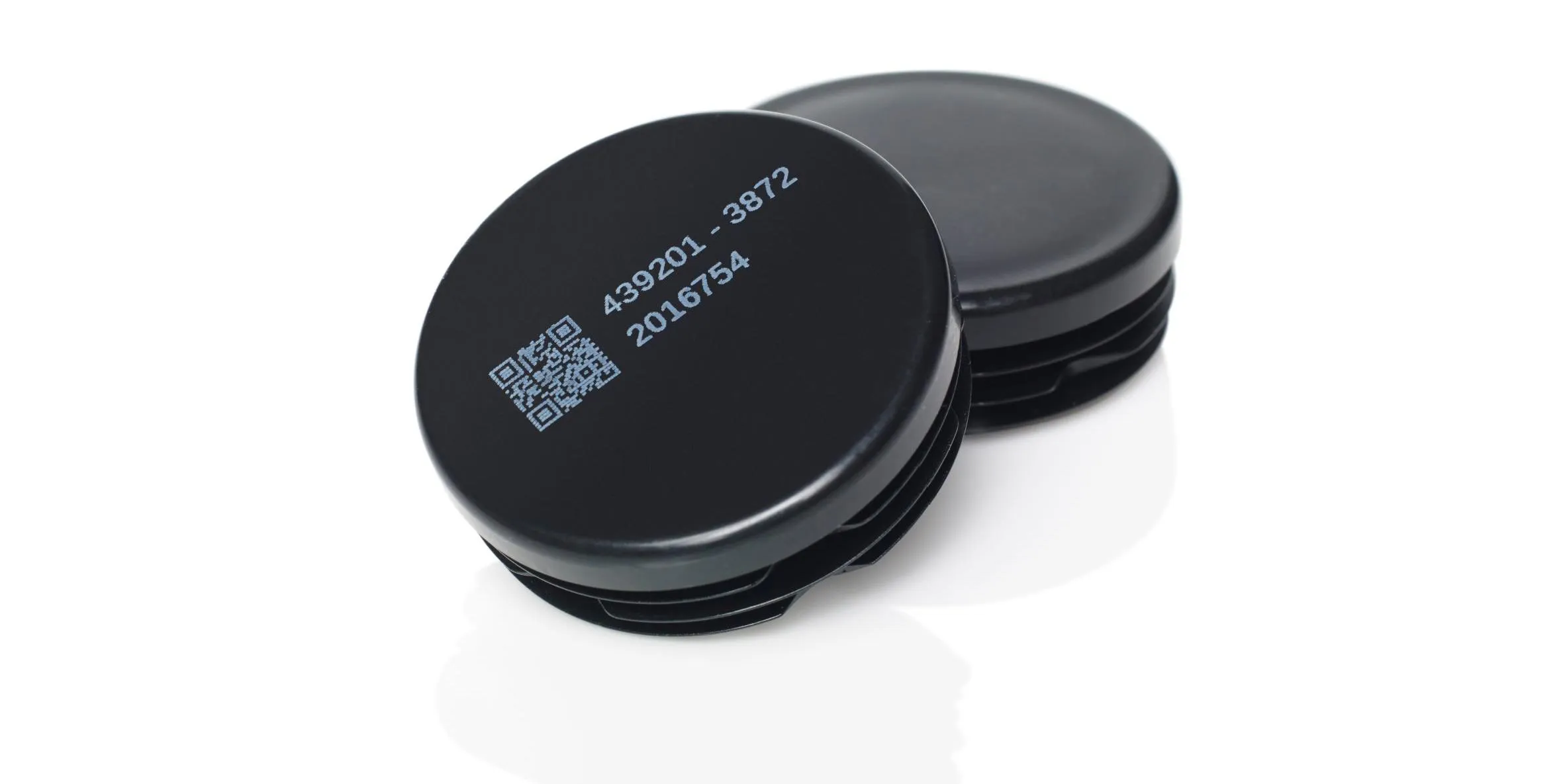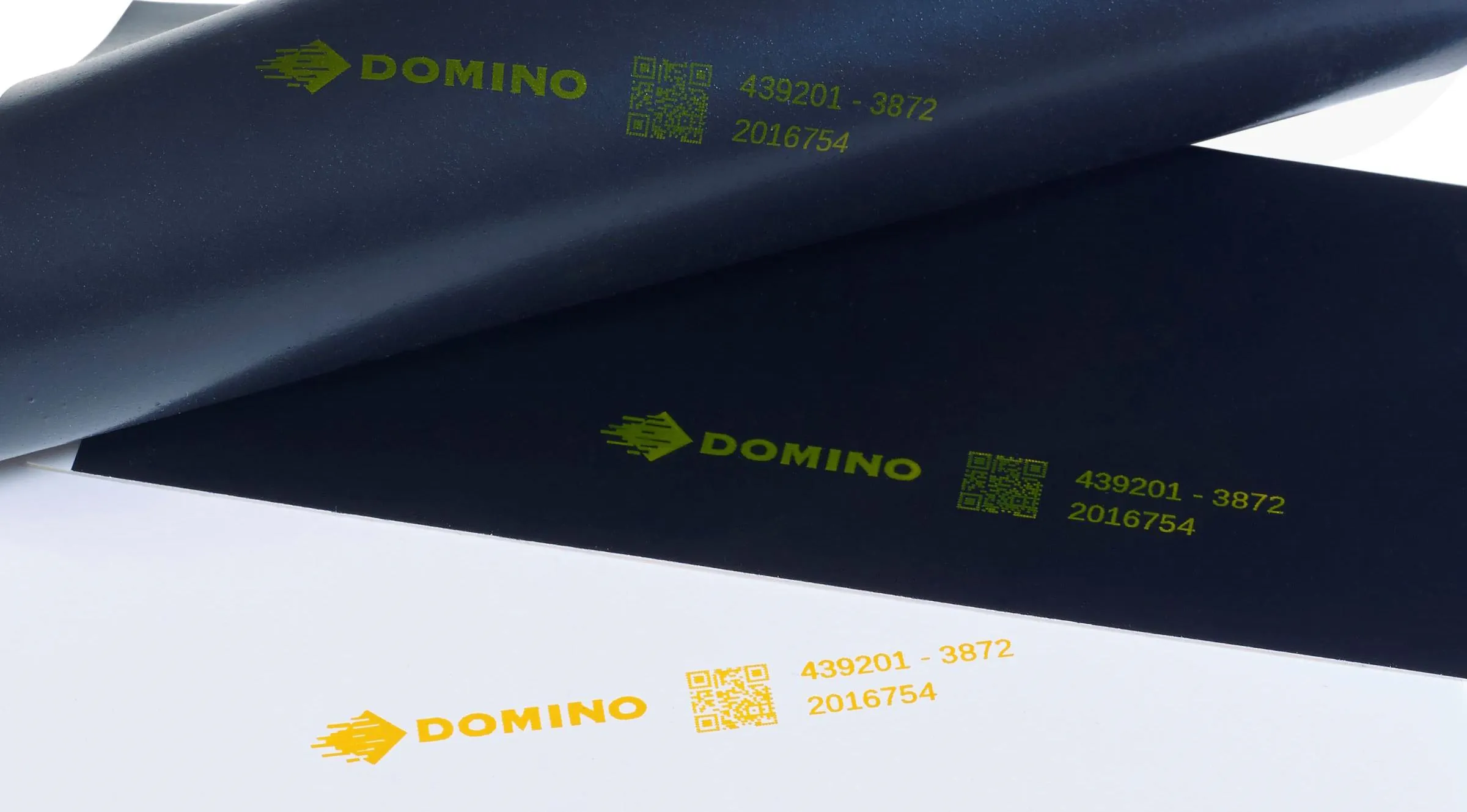What is direct part marking (DPM) and where is it used?
The need for marking parts is found across many industries including aerospace, automotive, construction materials, electronic components, and extrusion applications.
Parts are directly marked in the production process for various reasons. To list but a few: differentiating and identifying similar-looking parts, supporting the assembly, indicating a quality check or other process has been successfully passed or enabling to trace the part back to the production line.

Let’s have a look at the marking technologies used
Most parts are made of metals and plastics and many of them are black. The codes, including symbols, logos, data matrix codes and text are coded directly onto the surface of a part with a technology that ensures the marking is easily visible and readable as well as remains on the part for as long as necessary.
So a coding technology that can achieve a good contrast and clear, sharp, lasting code on a dark surface is required.
Traditionally continuous inkjet (CIJ) printers and fibre Laser have been used for this type of application. Both technologies can achieve a well contrasting code on these materials. CIJ printers offer a flexible solution when the distance from the printer to the component is variable. If codes need to be permanent, or small machine readable codes in higher resolution are required lasers are used.
Domino’s Gx-Series TIJ printers - an industry alternative
With the recent developments in inks, thermal Inkjet (TIJ) printers are a great solution for DPM too. Domino’s Gx-Series TIJ printers provide great code quality and clarity, excellent ease of use. The cartridges are plug and play, giving the flexibility to quickly switch from one ink to another dependent on the production. This flexibility is unique to TIJ and is key for production facilities which manufacture a range of products on the same production line.
Historically TIJ inks have been in traditional colours – black, blue, red etc., meaning that applications which code onto dark substrates have not been catered for. That has changed with the launch of Domino’s white (WT101) and yellow (YL101) inks. These recent ink developments have enabled high quality, pigmented inks to be used with this easy-to-use cartridge based technology.
James Gibbins, TIJ Fluid Product Manager, Domino Printing Sciences

What’s important when printing onto parts and how does TIJ meet the requirement?
- Colour: to achieve a sufficient contrast with a printing technology an opaque white or yellow ink is needed on the mostly coloured, dark materials. Our new white and yellow pigmented TIJ inks ensure high contrast codes on the dark and black substrates.
- Size: codes need to be small to fit on small components. To print a very small, yet well legible code the printer needs to be able to print in a high resolution. TIJ is great at providing high resolution, serialized coding including machine readable codes (e.g. data matrix and QR codes), logos and text.
- Adhesion: frequently used materials range from ABS to PET and aluminum; to not slow down the production process the print needs to adhere well to the material, dry fast and not rub off easily. Our white and yellow TIJ inks have great adhesion onto this range of substrates, including polyamides, ABS, PET and aluminum among others.


If you are looking for advice on DPM (direct part marking), please do get in touch.